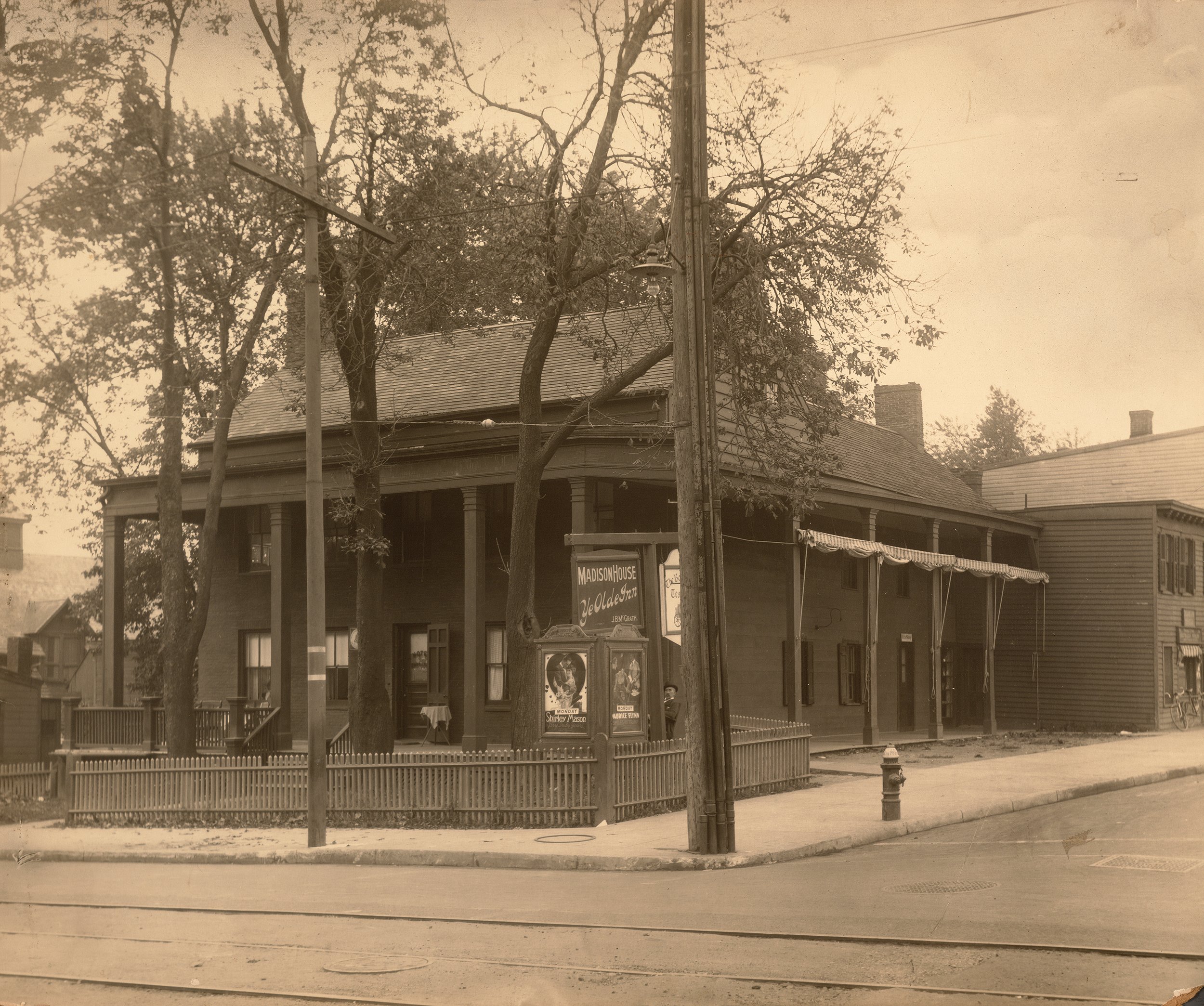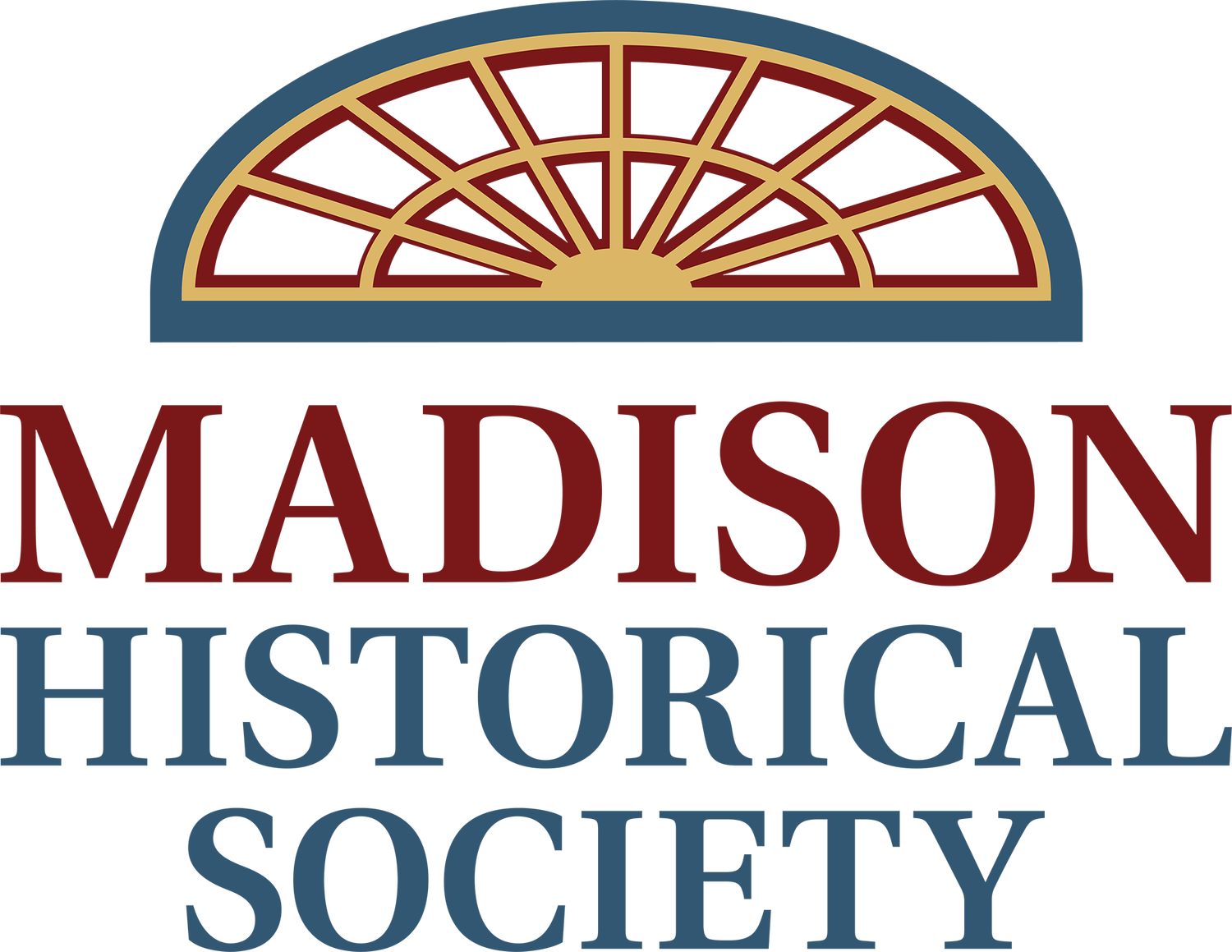
1710-1834 Bottle Hill
In putting this limited important date list in Madison history, we believe it is correct to the best of our knowledge. Sometimes we found conflicting information between historians and source materials.
1710
The initial settlement of the area now known as Madison occurred around 1710 by people from the Elizabethtown and Newark areas. The majority of the settlers purchased their land from the West Jersey Proprietors, holders of large grants from the British Crown. Some settlers bought land from the Indians. The general area was known for many years as South Hanover.
1730
It is thought that Andrew Miller built his home on land he bought from David Burnet. The house is called the Luke Miller house with the Miller Forge on the same property. The original house is located at 105 Ridgedale Avenue.
Luke Miller house
Daniel Sayre House built 1745
1745
About this time Daniel Sayre built the house which still stands on Ridgedale Avenue.
1747
The Presbyterian Meeting House was built on the hill above Kings Road at the site of the present cemetery on Main Street. It was called the Presbyterian Church of South Hanover until 1817. The land was given to the church by David Burnet. The Burnet Homestead stood on Rosedale Avenue until 2020. The Reverend Azariah Horton, a Yale College graduate was the first regular minister from 1751 until his retirement in October 1776.
1763
The Presbyterian congregation purchased land for a parsonage near the site of the present Presbyterian Church on Green Avenue.
1776
The little cluster of homes along Ridgedale Avenue and Kings Road was known as Bottle Hill. A tavern had been built near what is now James Park, at Park and Ridgedale Avenues. During the Revolutionary War, the Continental Army established their quarters in the area called the Loantaka Encampment of 1777. Of the soldiers encamped at Loantaka, most were militia. A number of the officers were garrisoned in the homes of Bottle Hill residents. Colonel Matthias Ogden probably stayed with the Millers and General “Mad” Anthony Wayne with the Sayres. It is thought that General George Washington visited and used the Miller’s Forge during that time. Both houses and the forge remain on Ridgedale Avenue.
1798
Bottle Hill had its first regularly scheduled stagecoach stop between Morristown and Paulus Hook (Jersey City).
1804
The Morris Turnpike, which was thirty-four feet wide, opened through Bottle Hill from Elizabeth to Morristown with a toll gate at Rosedale Avenue. The Wells Fargo bank presently occupies the site of the toll house. The Turnpike is the present Route 124.
1805
The first recorded Mass in the area was celebrated at the home of Mr. Lavielle Duberceau. It was the first time Catholicism was practiced in the area.
1806
During the latter half of the 18th century the area north of Madison Avenue was within Hanover Township and to the south, Morris Township. When Chatham Township was created, the areas now known as Madison, Florham Park, Chatham, and Chatham Township became Chatham Township.
1809
The Madison Academy was built on the corner of Park Avenue and Ridgedale Avenue by a stock company organized by a number of leading citizens. It was an elaborate and costly building for those times, and children of the community were educated there for seventy-two years. The land had been donated for the purpose of a school by James Burnet. The school was later moved to Green Avenue.
Bottle Hill Tavern after moved to Main Street and Waverly
1819
Colonel Stephen D. Hunting of the Morris County Militia purchased the original site of the Bottle Hill Tavern. A tavern and an inn or tavern was erected on the site and known through the years as the “Waverly House,” the “Madison House,” the “Bottle Hill Tavern,” and the “Widow Brown.”
1825
A new Presbyterian Church building on Main Street was dedicated. The new building housed the First Presbyterian Church of the Township of Chatham. In 1846, it became known as the Presbyterian Church of Madison. In 1927, the building was sold to the
the Masonic Lodge. The Borough of Madison bought the building in 2023 for the purpose of converting the building into a senior center and space for public and nonprofit programs.
In July, when the Marquis de Lafayette returned to the United States, he was warmly welcomed in Bottle Hill with a recitation of a poem written by J.T. Derthick, the principal of the public school, by thirteen young girls representing the thirteen colonies. Lafayette was traveling the Morris Turnpike and stopped at the hotel of Col. Stephen D. Hunting. He was met by Rev. Dr. John G. Bergen, pastor of the Presbyterian Church, who escorted him into the Madison House where the girls recited the poem and where he enjoyed some refreshments before resuming his journey. However, William P. Tuttle wrote in “Bottle Hill and Madison” that when Lafayette saw fellow Frenchman and Bottle Hill resident Vincent Boisaubin in the crowd and went to greet him, Boisaubin snubbed him by turning his back on him. Boisaubin was a French Royalist and held Lafayette in contempt.
The first parish building to be used as a Catholic Church and rectory was built on Ridgedale Avenue. The first floor of the building was the church and on the second floor was a residence for the priest. The land had been purchased by influential local Catholics originally from France, Vincent de Boisaubin and sons, Lavielle Duberceau, and Hyacinth and Henrietta DuRest Blanchet.
1820s
Burroughs Furniture and Undertaker
Caleb Burroughs established a cabinet making and undertaking business at a site on Main Street where Burroughs, Kohr & Dangler is operating.
During this time the first large manufacturing facility in Madison produced umbrellas, straw bonnets and clothing. Henry Keep’s Bonnet and Umbrella Factory located on the corner of Prospect Street and Kings Road employed approximately 100 women and several men.
1832
William Gibbons, a millionaire from Georgia, bought land west of Bottle Hill after his wife fell in love with the scenery in the area. They called it “The Forest.” By 1851, Gibbons had accumulated about 1,000 acres. The mansion is now the administration building for Drew University, Mead Hall.




